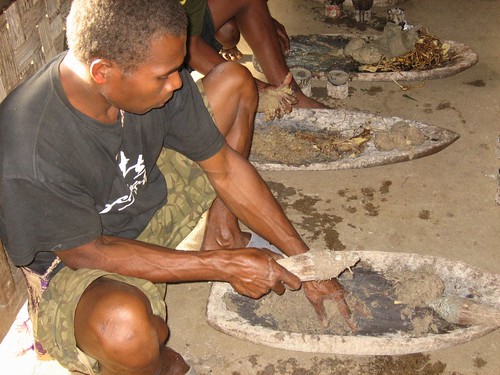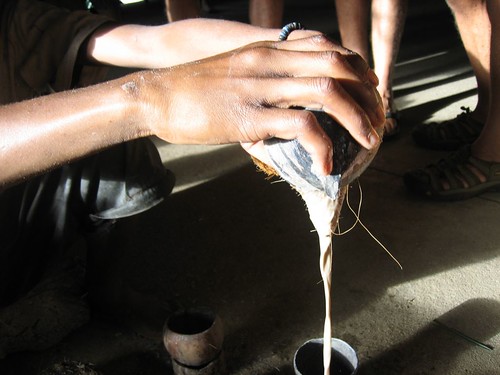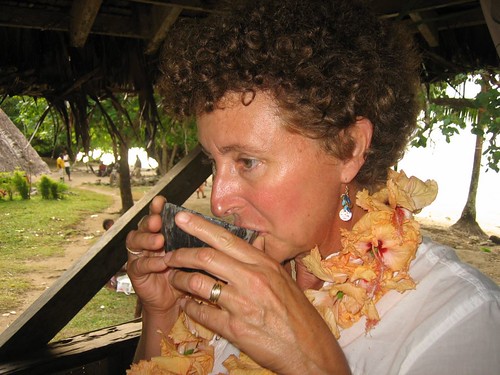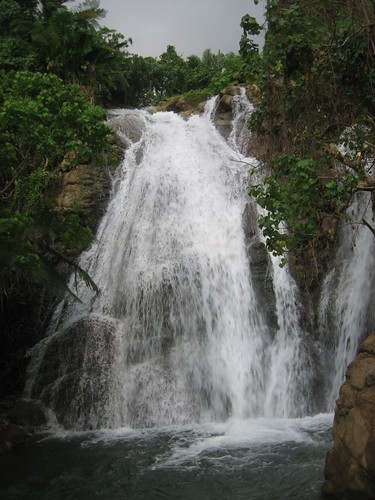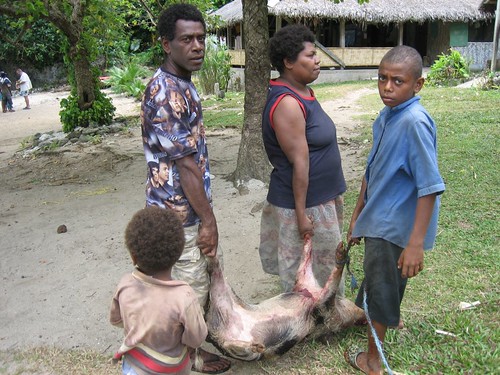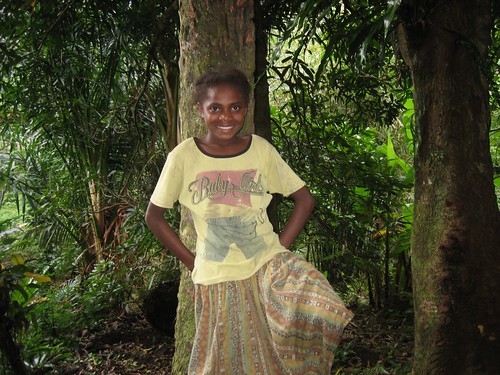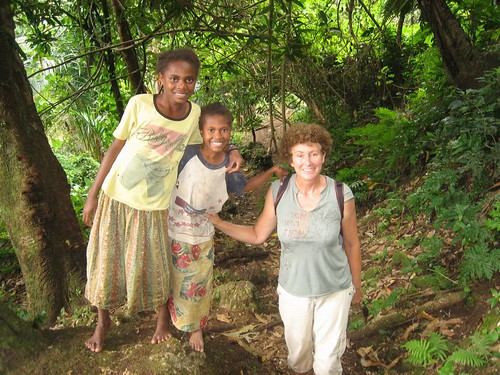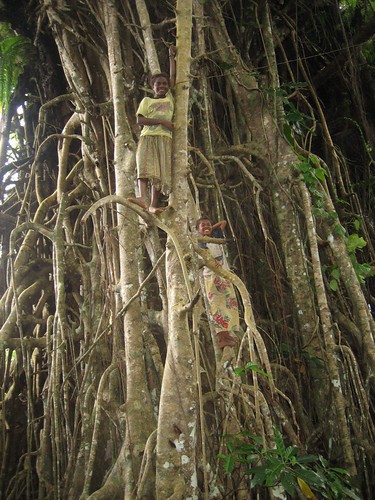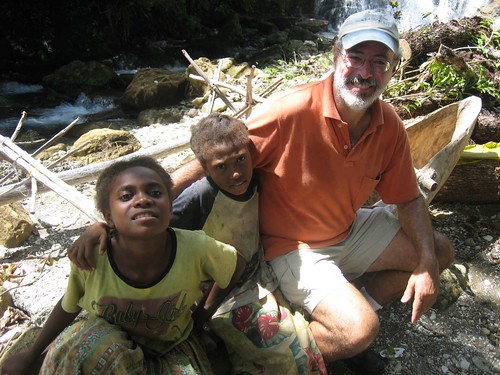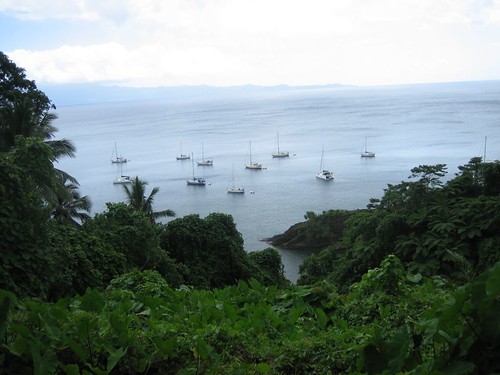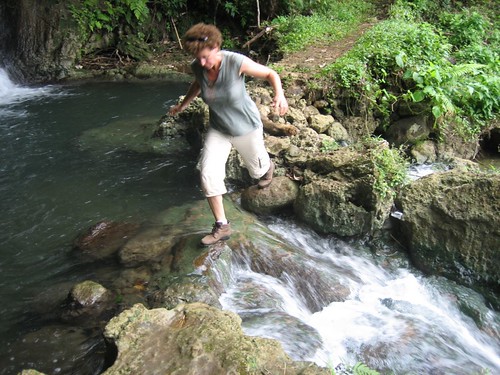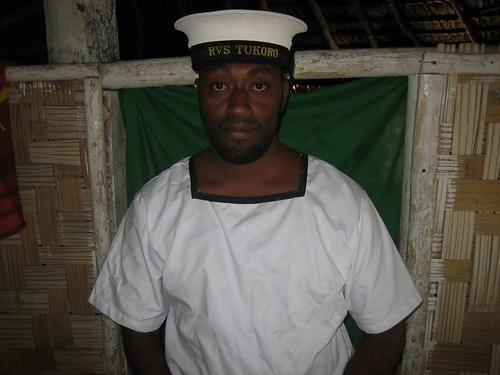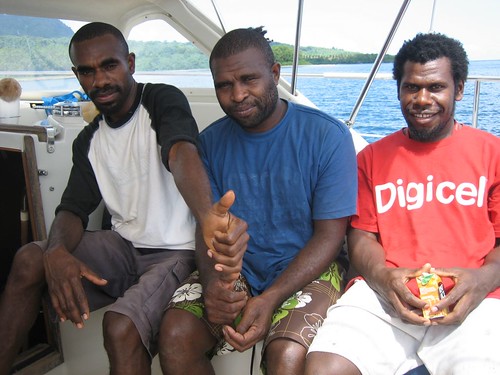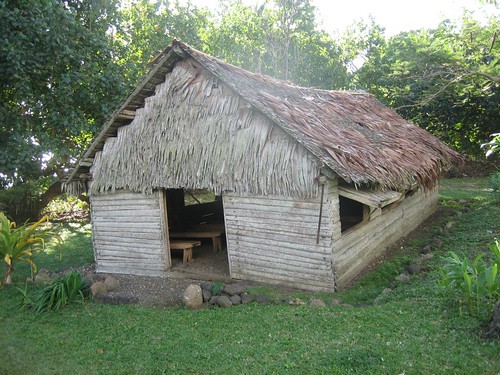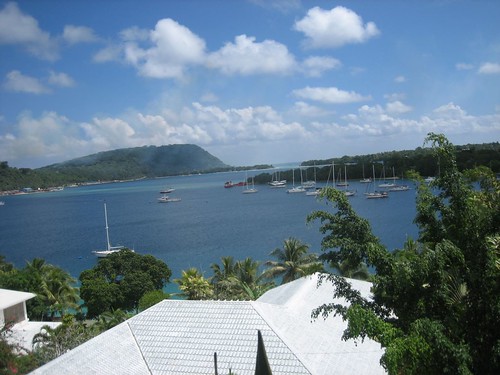27 September
We are about to spend our third night anchored on the north side of Ile Puen. Before talking about this place, let me get up to date with our other stops.
On Tuesday, September 22 we left Ilot Kouen for Ilot Tenia, about 25 miles further up the west coast of New Caledonia. Ilot Tenia differs from other small islands in the lagoon in that it is right up against the fringing reef that encircles New Caledonia. Like Ilot Kouen, it is uninhabited but busy on weekends when French-Calendonians take to their boats.
On arrival, there was only one other sailboat at anchor — “Robyn’s Nest” with our friends John and Chris plus Chris’ visiting friend Karen from Calgary. They had us over for drinks and chicken curry that evening and told us where to snorkel the next day. John likes Ilot Tenia because he can surf in the adjacent Passe de Saint Vincent in the morning, and kiteboard in the lee of Ilot Tenia in the afternoon when the wind rises.
On Wednesday, we headed out in our dinghy through a small gap in the reef to snorkel (in full wet suits) near where the ocean meets the fringing reef. It was quite spectacular, with many large fish including big groupers, a school of humpheads, a Spanish mackerel, and a black-tipped shark. We sat on the beach of the island for a few minutes to enjoy the sunset but were attached by a swarm of mosquitoes, the effects of which we still feel.
We planned on staying a few days at Tenia, but weird weather Thursday induced us to leave. Every day since we left Noumea, we have had nothing but blue skies, low humidity and sunshine, until Thursday morning. It was sunny and cool (68 degrees F) early in the morning, but there was a line of gray clouds, and what looked like fog or rain, in the distance. Within the hour, a cold front pushed through turning the boat around 180 degrees in a wind shift, a freshening breeze, choppy seas, but just a trace of rain. Ilot Tenia is a very unprotected anchorage, so after waiting a bit hoping that the dark clouds and “fog” would dissipate, we decided to head to Ile Puen, where there is a protected place to anchor. As we prepared the boat for the short sail to Ile Puen, we noticed that the decks were covered in red dirt. As it turns out, the “fog” was a huge dust storm that came off of the Australian outback, passed over Sydney (delaying flights), and made its way 1000 miles to New Caledonia. It was all over the news here and seems to be unprecedented.
Ile Puen is a privately owned island, and we needed to ask permission to come ashore. On landing the dinghy, we were greeted by a large extended family of French-Caledoniens (“Caldoche”) with a ramshackle weekend home. There were a dozen children, ranging in age from 1 to 18 years, running around a having a good time. We were also introduced to the “proprietor” of the island, Donnie, who lives a 100 meters away. They were all so friendly and excited to meet “les Americains.” The Caldoche, who settled in New Caledonia in the 1800’s, are quite fond of Americans. As we settled into tea and cake with them, they said how the Caldoche appreciate what the Americans did in saving them from Japanese occupation during the war, and also saving France from the Germans. Not something we expected to hear, even though we have seen the small park honoring the US just next to the Port Moselle marina in Noumea.
Donnie gave us a large rump of freshly shot deer and, after seeing the imperfect shells Laura was collecting on the beach, he have her a perfect nautilus shell — quite a rarity.
Yesterday and today we hiked around the island in brilliant sunshine. As we ate breakfast in the cockpit, dolphins frolicked nearby.
Tomorrow, we expect to sail back to Ilot Tenia and snorkel some more. Now that Robyn’s Nest has headed back to Noumea, Sabbatical III seems to be the only cruising boat around.
M.
Posted via email from sabbatical3blog’s posterous


